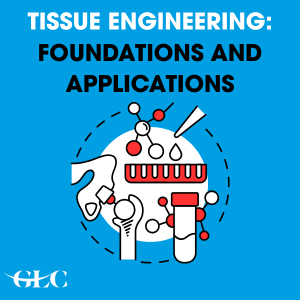Free knowledge to monitor the world of events. Have a look at our must read Blogs on Pharma, Finance, HR, Health and Cross Industry.
Tissue Engineering: Foundations and Applications
2022-08-16
Tissue Engineering is one of the technologies that has the potential to transform medicine.
In the rapidly evolving world of biomedical science, tissue engineering is one of the technologies that has the potential to transform medicine. From being able to develop new organs to being able to produce lab-skin for individuals who have been severely burned, tissue engineering is transforming the boundaries of what is possible within modern medicine. But what exactly is tissue engineering, and how is it applied today?

What is Tissue Engineering?
Essentially, tissue engineering is an interdisciplinary science that integrates ideas of biology, engineering, and materials science in an attempt to construct functional substitutes for damaged or diseased tissues. It is the use of scaffolds, cells, and bioactive molecules to restore, maintain, or improve tissue functions.
Key Foundations of Tissue Engineering
- Cells
In tissue engineering, cells are the basic building blocks, like marketers in a company. Among various types, stem cells are the key players. These undifferentiated cells can transform into specialized cells, much like a chess pawn becoming a queen.
There are two main types:
- Embryonic Stem Cells (ESCs): Pluripotentcan become almost any cell type.
- Adult Stem Cells (ASCs): Multipotentlimited to specific cell types.
Both are essential in regenerative medicine.
- Scaffolds
These are 3D structures made from natural or synthetic materials that provide a framework for cells to attach, grow, and form tissues. A good scaffold should be:
- Biocompatible
- Biodegradable
- Porous to allow nutrient flow
- Growth Factors and Signals
These are biochemical cues that guide cells to grow, divide, and specialize into specific tissue types. Commonly used growth factors include:
- VEGF (vascular endothelial growth factor)
- BMPs (bone morphogenetic proteins)
- Bioreactors
In lab settings, bioreactors are used to mimic the bodys environment, providing mechanical and chemical stimuli to enhance tissue growth.
Applications of Tissue Engineering
Tissue engineering has moved from theory to clinical application in several areas of priority:
- Skin Regeneration
Engineered skin is one of the earliest and most important applications, which has been used to heal extensive burns, chronic ulcers, and wounds. Products like Apligraf and Dermagraft are already commercialized.
- Bone and Cartilage Repair
Biodegradable scaffolds seeded with bone marrow-derived stem cells are helping in the repair of bone and cartilage in orthopedic and dental applications.
- Cardiovascular Tissues
Engineered blood vessel and heart valve tissue is being created to treat cardiovascular disease, offering a replacement for man-made implants.
- Nerve Regeneration
Spinal cord and peripheral nerve injury are being tried to be fixed with engineered neural tissue.
- Organ Regeneration
While still in experimental stages, the long-term goal is to bioengineer complete organs like kidneys, livers, and hearts. Scientists have already been able to create mini-organs, or organoids, which can mimic the function of real organs but on a smaller level.
Challenges and Future Directions
While the progress is promising, several challenges remain:
- Immune rejection of the transplanted tissue
- Vascularization, or the formation of blood vessels in the engineered tissue
- Cost and scalability of tissue fabrication
- Regulatory barriers to clinical approval
Researchers are also engaged in 3D bioprinting, whereby tissues are printed layer by layer with bio-inks, and CRISPR gene editing to improve cell performance and compatibility.
Conclusion
Tissue engineering holds the potential to revolutionize medicine with regenerative, patient-specific solutions for a wide array of diseases and injuries. With the advances in technology, the possibility of replacing damaged tissues or even whole organs with substitutes grown in the lab becomes more feasible than ever.
Whether student, scientist, or even an inquisitive mind, being abreast of tissue engineering is watching the future of medicine unfold in real life.
Do you want to understand more? Join our upcoming Tissue Engineering Masterclass
By Shara Najimudeen, Digital Marketing Executive, GLC Europe, Colombo Office, Sri Lanka.
Get a feel for our events

Training Program for CMC Leaders - EU edition
27th October 2025 - 16th January 2026
Rich with practical insights and real-world applications
learn more >>
Training Program for CMC Leaders - US edition
27th October 2025 - 16th January 2026
Rich with practical insights and real-world applications
learn more >>
Mastering the Common Technical Document (CTD) for Biologics Masterclass - EU edition
12-16 January, 2026
From guidelines to submissions
learn more >>














